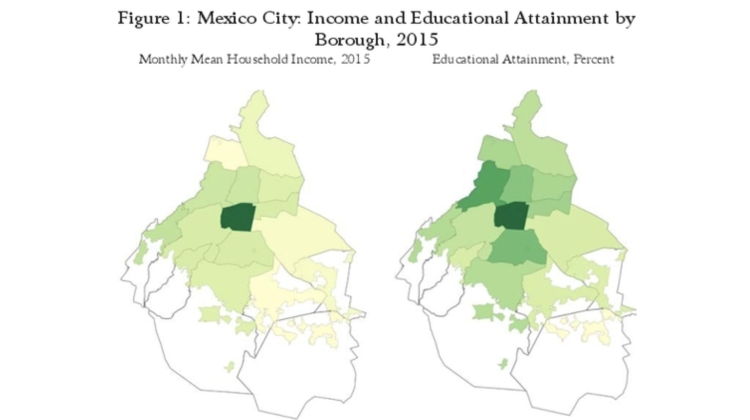Currently there are over thirty four global Megacities, urban areas whose population exceeds ten million inhabitants, predominately located in the Global South. Due to their size and spatial characteristics the challenges of intensifying urbanization — climate crisis induced risks, and growing economic, political, and social divides — are amplified within megacities.
Using Mexico City as a case study, DUSP alum Misael Galdámez (MCP ’19, Research Analyst at the UCLA Latino Policy and Politics Institute) and Amy Glasmeier seek to understand and highlight how spatial inequity in access to key resources for a dignified standard of living are distributed and concentrated across Federal Districts in the city.
“Mexico City is emblematic of today’s megacity and is the largest in Latin America. Done in partnership with the Universidad Iberoamericana, my thesis provided a fruitful opportunity to highlight inequalities that exist and persist in cities,” said Galdámez. “While Mexico City’s spatial inequalities are not unique, they demonstrate the importance of and need for planning with and for economically excluded communities. Infrastructural investments in modern megacities need to account for the existing inequalities that force impoverished citizens to the peripheries.”
In their paper Galdámez and Glasmeier combine spatial analysis of access to resources such as housing, mobility, and employment opportunities with a living wage analysis to demonstrate the interplay between economic access and infrastructural conditions in megacities. Leveraging their findings, Galdámez and Glasmeier suggest planning pathways to allow Mexico City to "bridge deep fissures in its social and economic fabric” to create a more equitable and globally competitive modern megacity.
Read the full paper
Read Galdámez's MCP thesis
